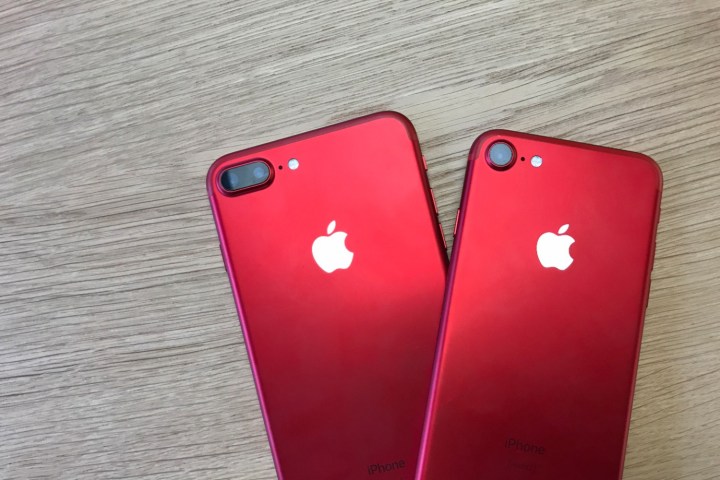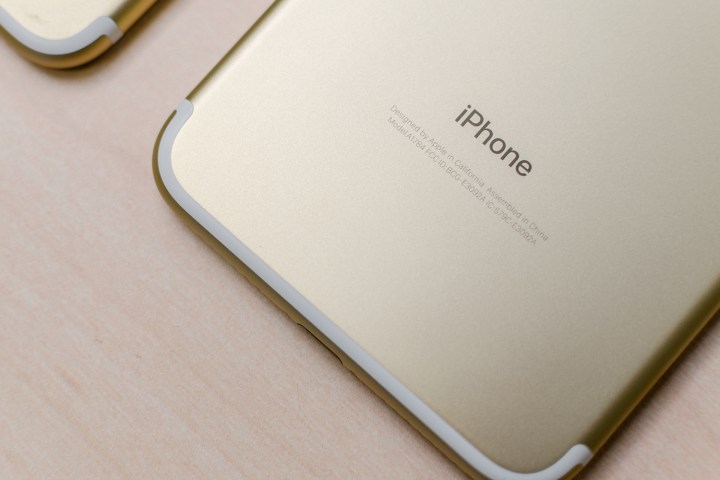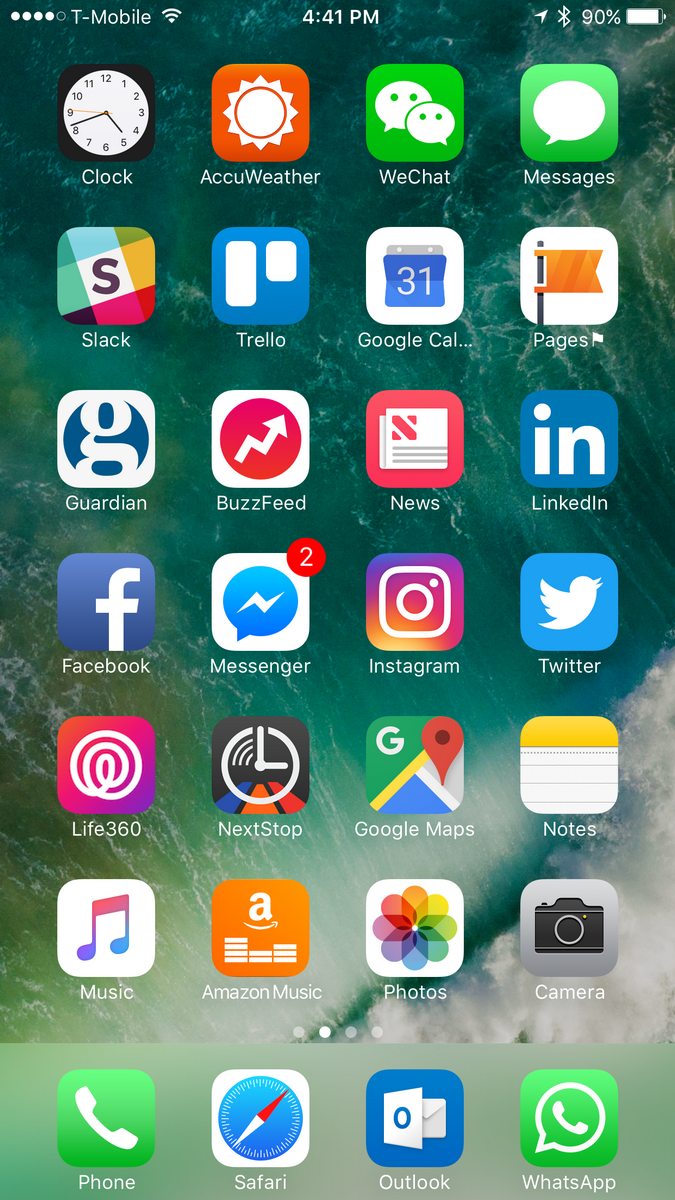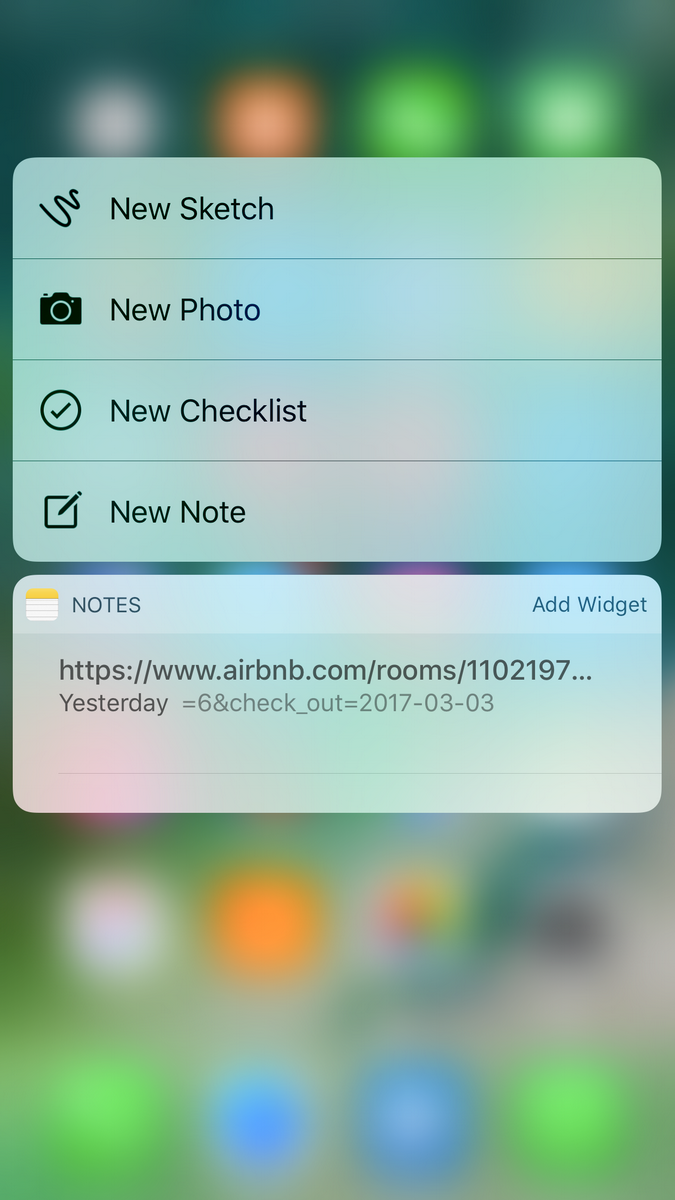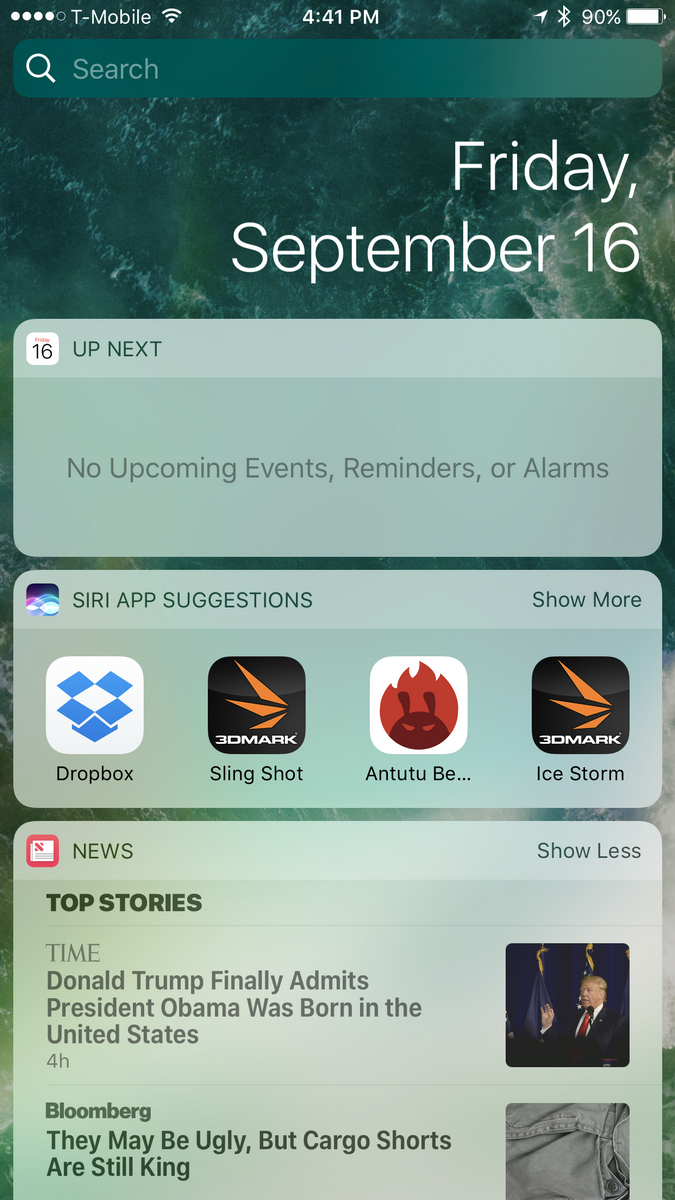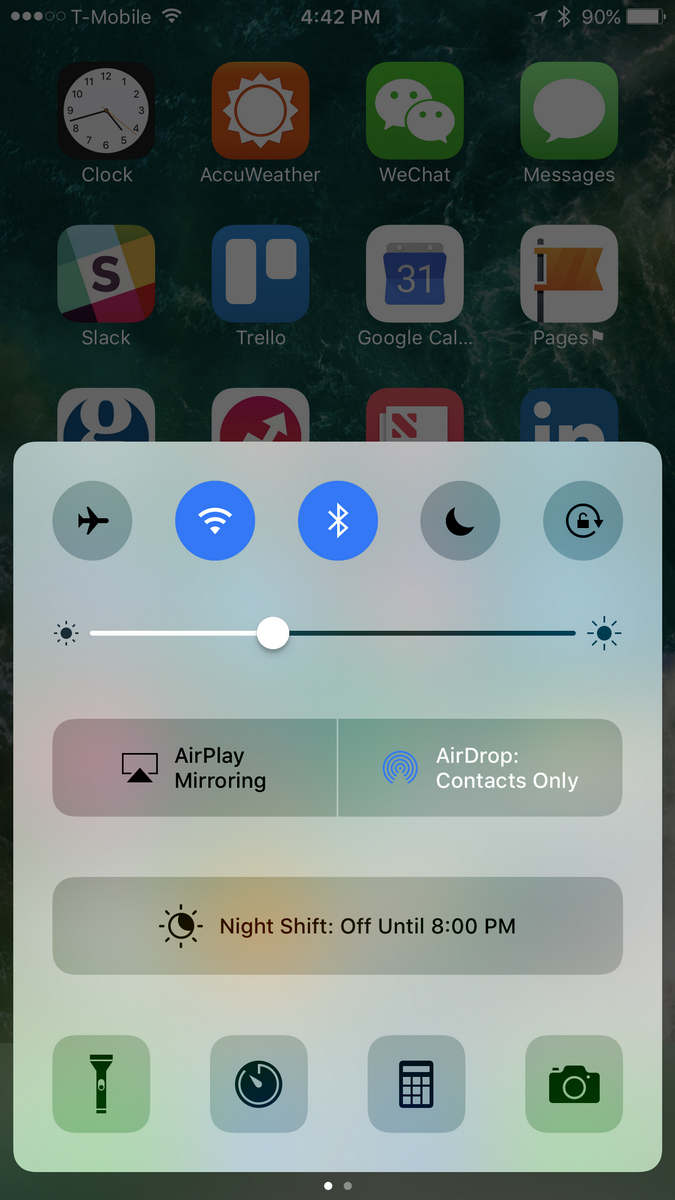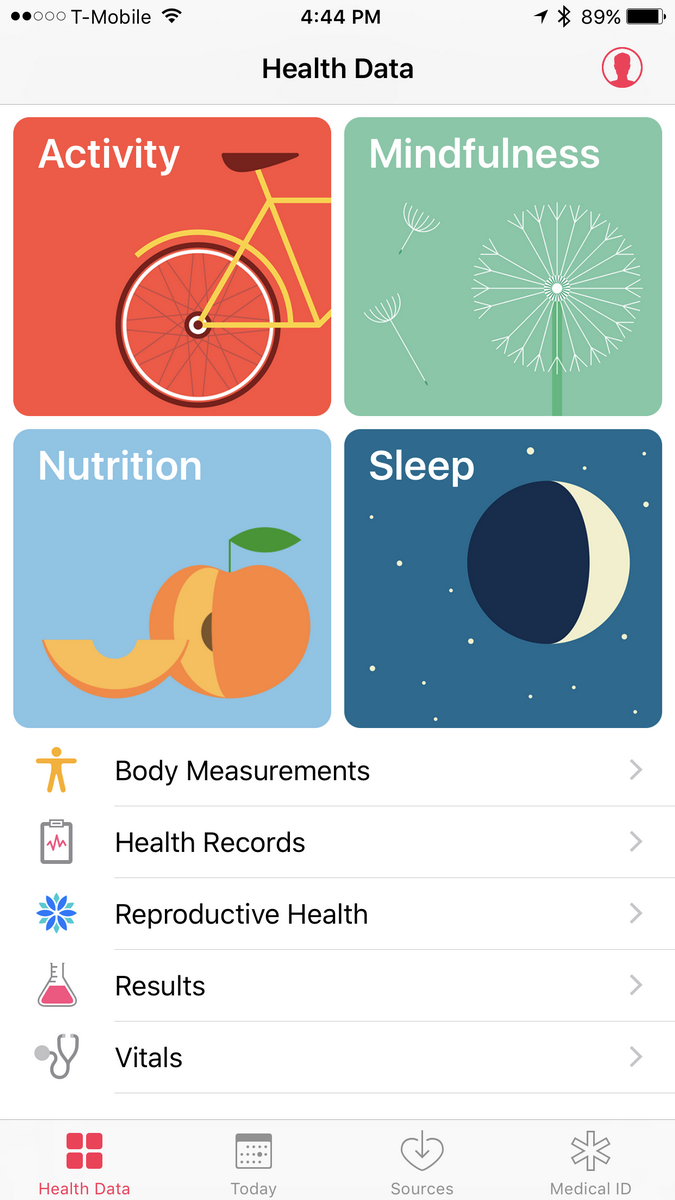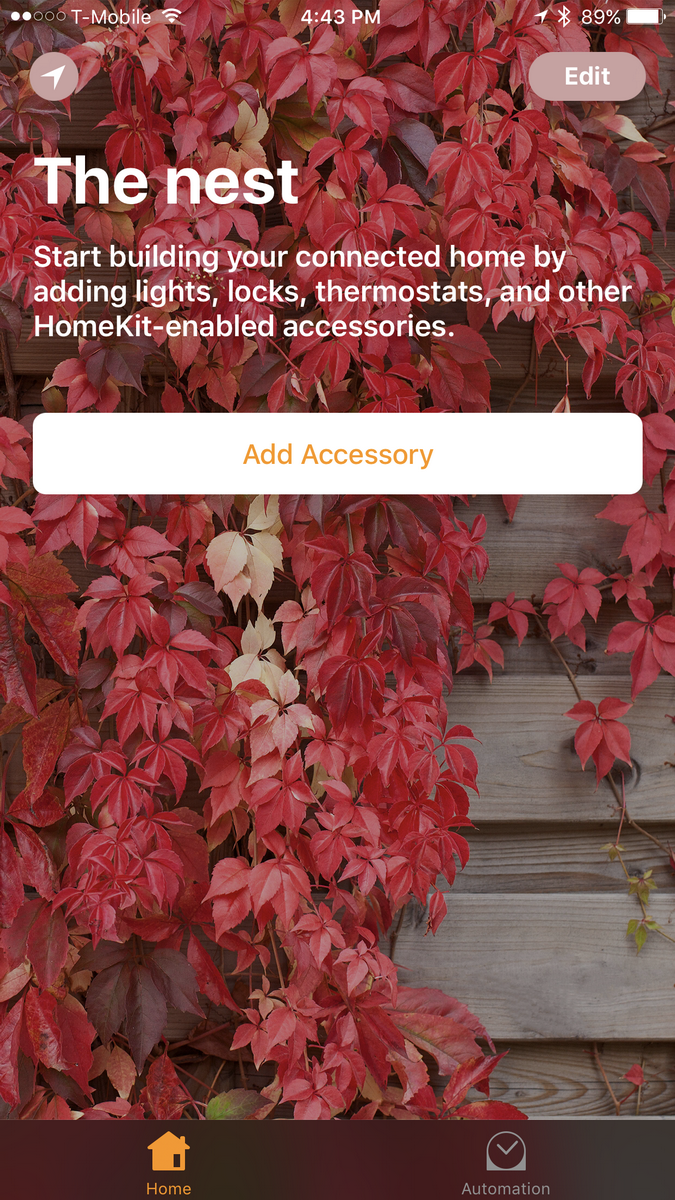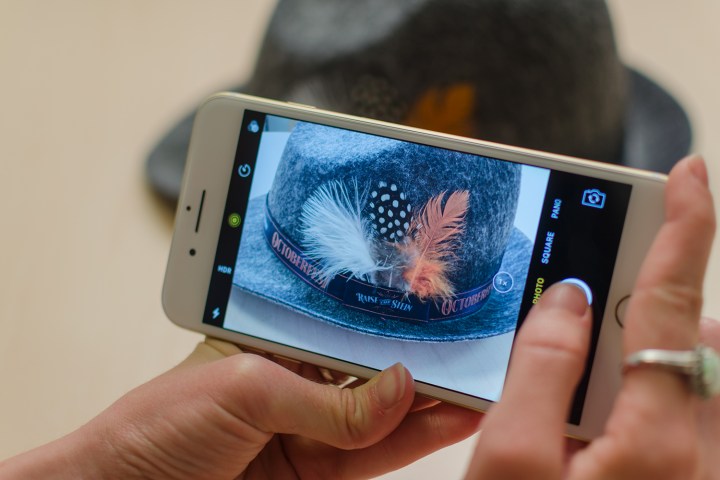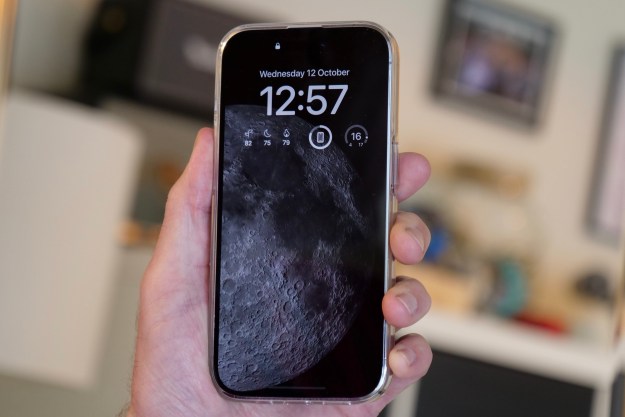
- Dual-camera tech is impressive
- It’s finally water-resistant!
- Speedy processor
- iOS 10 is smooth and slick
- Attractive aluminum uni-body design
- No headphone jack!
- Expensive
Update: Apple’s latest handset may have gotten a new color (meet iPhone RED), but there’s a new model on the way, called iPhone X, that promises to wow. Is the 7 Plus still the iPhone to buy, and how does it stack up against the Android competition? We’ve updated our Apple iPhone 7 Plus review, and added an Our Take section.
Apple has done it again with the iPhone 7 Plus, a phone that’s as powerful as it is controversial. In camera tests it wows with 2× optical zoom and sharp photos, and it’s finally water resistant; but there’s just one little problem: it doesn’t have a headphone jack.
We’ve been using the iPhone 7 Plus since its release, judging its ongoing performance, and debating whether a missing headphone jack is a deal breaker.
The elephant in the room
Rumors that Apple was going to ax the 3.5mm headphone jack rocked the internet and inspired a flurry of rage, tears, and fears among the Apple faithful. Rumors turned to fact, so have we learned to live with it? First, what does not having a headphone jack mean to you: You have to rely on a Lightning converter for your current corded headphones, or upgrade to a pair of Bluetooth earbuds. To make up for the missing headphone jack, Apple includes a pair of Lightning-connected (wired) EarPods in the box, as well as a Lightning converter — a short cable, horribly known as a dongle — for your 3.5mm headphone plug. The downside: You cannot charge your phone and listen to music at the same time.
So just how bad is life without a headphone jack? It depends. If you, like many iPhone users, only use the earbuds Apple always includes in the box with your iPhone, you probably won’t care. Apple packages a pair of earbuds just like last year’s, but they connect to your phone’s Lightning port instead of a headphone jack. The only time a problem arises is when you want to charge your phone and listen to music simultaneously — because now you can’t do that without a gross-looking dongle. If you already use wireless headphones, you won’t even notice the headphone jack is gone. For many, however, the omission is still noticeable, a point we’ll touch upon throughout our Apple iPhone 7 Plus review.

If you have a beloved pair of wired headphones, however, prepare to be seriously annoyed and thoroughly put off by the iPhone 7 and 7 Plus. Sure, you can use the included 3.5mm to Lightning adapter, but dongles aren’t exactly high-class. It’s small, so you can easily lose it, and the wire connection between the 3.5mm port and the Lightning connector feels flimsy. Much like the included iPhone charging cords, which always break after a year or two, we initially suspected this adapter may not have the longest life. More than six months in, ours is still intact after daily use, and operates as it did when new. Over this time, the adapter has spent its life plugged into the same pair of earbuds, like a little extension cord, which has minimized the changes of it being lost. Using it doesn’t impact the sound quality in any obvious way.
The iPhone 7 Plus is the most powerful and technically impressive iPhone yet.
The wired earbuds that come with the iPhone 7 and 7 Plus sound reasonably good for included headphones, but they’re not discernibly better than the typical 3.5mm earbuds that have shipped with iPhones past. Of our two sets of EarPods, one stopped working properly after a day, forcing us to repeatedly plug them in and jiggle them to try and get them to work. They broke for us on day two, leaving us to rely on an alternative pair of headphones when putting together our Apple iPhone 7 Plus review.
Removing the headphone jack meant Apple had to improve wireless audio — the result is the W1 wireless chip. It’s implemented in another new Apple product, the AirPods, which are completely wireless and get 5 hours of battery life. They aren’t included in the box, and you can read more about the $160 wireless earbuds here. We tried a pair on and they are exactly like EarPods, just sillier looking without the cord. You can also use any normal wireless headphones with the iPhone 7 and 7 Plus — check out our favorites here.
The other bright spot on the audio front is how the iPhone 7 and 7 Plus have stereo speakers — both at the top and bottom of the devices for “increased dynamic range.” The speakers do sound better and louder on the iPhone 7 Plus, though they aren’t as powerful as the front-facing speakers on the ZTE Axon 7.
Subtle aluminum design is finally water-resistant
The iPhone 7 Plus doesn’t look all that different from last year’s iPhone 6S Plus — you’ll have to wait for next year’s iPhone 7S/8 for major changes, and rumors are already plentiful.
Although the aluminum uni-body design is nearly identical to last year’s iPhone, that’s not to say it isn’t beautiful. The metal is soft and smooth, and the Apple logo shines out of the center back of the phone. The antenna lines now curve around the corners instead of slashing across the back of the phone, resulting in a cleaner, more minimalist appearance. The dual-camera module sadly sticks out on the back.
Apple introduced two new color options at launch, black and jet black, and then a special edition Product:RED later on. The jet black model features a “pristine, mirror-like surface” and a high-gloss, which is sadly prone to scratches. It also picks up fingerprints like nobody’s business. It looks so pretty until you touch it; then it’s covered in oily smears. The regular black model is the solution, and it gets considerably less smudgy. Apple still offers silver, gold, and rose gold for traditionalists who don’t want the new black and red models.
Unfortunately, the iPhone 7 Plus is still gigantic. This has been emphasized by bezel-less phones like the Samsung Galaxy S8 and the LG G6. They both have larger screens than the iPhone, yet housed in considerably more compact bodies. The bezels at the top and bottom of the iPhone are overlarge, and slimming them down would make the phone far more manageable. The iPhone 7 Plus’ footprint could be much smaller, which would appeal to more users and be more comfortable to hold.
It’s not that the iPhone 7 Plus is uncomfortably large, but it’s definitely a device you want to hold with two hands after a while. That said, the Plus is the model we recommend over the smaller iPhone 7, and unless you have very small hands, it’s still perfectly manageable.
The biggest cosmetic difference (besides the removal of the headphone jack) is that both the iPhone 7 and 7 Plus are (finally!) water- and dust-resistant with an IP67 rating. That means you’ll be able to take either of them under up to 1 meter of water for about 30 minutes. The water resistance level isn’t as high as it is on the Galaxy S8, which supports IP68 water and dust resistance. The difference is you can submerge the Galaxy S8 in 5 meters of water versus 1 meter with the iPhone 7. But unless you literally swim with your phone, it’s really not a huge deal.
While writing our Apple iPhone 7 Plus review, we dunked both iPhones in a beer stein full of water to see if they’d pass the test, and they did with flying colors. Both were fully operational after several submersion tests. We even played music on the iPhone 7 Plus while it was underwater in the glass, and it pumped out sound like normal.
Apple placed a “Taptic Engine” inside the phone where the headphone jack used to be, a chip that provides haptic feedback when you press the Home button. This is key, because now the button isn’t something you can press — it’s a flat, solid surface. Push on it to unlock your phone, and double-tap it to trigger Apple Pay when the screen is off. When you press against it, it provides the same physical feedback you feel when you use 3D Touch on an app icon: a small vibration, and that’s it. Some people will miss the physical button, but it doesn’t bother us at all. In fact, we actually like not having to physically press a button.
Specs: iOS 10 is smooth as butter with the A10 Fusion processor
The iPhone 7 Plus is an evolutionary step upward for Apple. No revolutionary changes here, but that’s not really a bad thing. The iPhone 7 Plus is nonetheless the most powerful and technically impressive iPhone yet.
Although it sports the same 5.5-inch screen with a resolution of 1,920 × 1,080 pixels, the screen is 25 percent brighter than the panel in the 6S Plus and it offers a wider color gamut. It’s not as high-resolution as most Android phones, many of which sport 2,560 × 1,440 pixel resolutions, but the iPhone 7 Plus has one of the sharpest, brightest, and most natural-looking screens you’ll find anywhere. The 1080p resolution doesn’t drain the battery as much, either.
Apple’s new A10 Fusion chip powers the iPhone 7 Plus. It’s a 64-bit, quad-core processor that’s 40 percent faster than the A9 in the iPhone 6S and 6S Plus. Apple says it’s 120 times faster than the original iPhone. Although that’s hard to prove, we did notice that iOS 10 runs smoother on the iPhone 7 and Plus than it does on the iPhone 6S and 6S Plus. Will you notice, though? That’s hard to say. It is subtle.
Of the four cores, two are for high-performance actions and the remaining two focus on boosting efficiency. Apple has designed a performance controller to determine which actions make use of which cores. For example, checking your email will most likely be powered by the high-efficiency cores, which are better for saving battery life. The processor also improves the iPhone 7 and 7 Plus’s graphics — it’s 50 percent faster than the A9.
Overall, we’re impressed with the iPhone’s performance. Apple’s iOS 10 runs like a dream, and continues to do so after six months. Several updates have arrived since launch, and the latest version is iOS 10.3.2. It remains solid, stable, reliable, and very fast. Apple’s iOS 10 also deeply incorporates 3D Touch into the interface. The new features include interactive notifications, new widgets, fun tricks in iMessage, and much more. You can read all our thoughts on iOS 10 here. The latest update to Apple’s operating system — iOS 11 — will be available at the end of June as well.
Dual-camera tech and 2× optical zoom are extraordinary
The dual-camera technology on the iPhone 7 Plus is its killer feature. Those two 12-megapixel sensors are the reason why you should buy this phone.
There are two lenses: a 12-megapixel sensor with optical image stabilization, a 28mm wide-angle lens, and an f/1.8 aperture; and a 12-megapixel sensor with a 56mm-telephoto lens and an f/2.8 aperture. The sensors are 60 percent faster than before and 30 percent more energy efficient, according to Apple. However, what’s cool about these cameras is what they can do. The telephoto lens offered the best optical and digital zoom we had ever seen on a smartphone, but has since been matched by the ability of the Huawei P10 and Mate 9’s zoom lens.
The iPhone 7 Plus can capture detail without losing any noticeable quality with 2× optical zoom. When you take a picture, a 1× icon pops up on screen. Tap it to bring the zoom up to 2× or drag this slider from 1× to 10× and zoom into spectacularly detailed images for a better crop. The camera uses a 2× optical zoom, but it switches to digital zoom when you move past it and on to 10×. The physical 2× zoom looks great and produces sharp closeups that far surpass what you’d get on the standard iPhone 7 or iPhone 6S.
Once you get to the digital zoom, however, things start to get less crisp. Digital zoom is good up to 5×; after that it starts to get blurry, smudgy, and pixelated. Digital zoom also has a harder time in low light, so stick to 2× if the lighting isn’t so hot. This is no different to any other digital zoom system on a smartphone camera, and not unique to the iPhone 7 Plus.
If you’ve never experienced the joy of a zoom lens on a smartphone, then you’re in for a treat. It’s one of the most consistently helpful features on the iPhone 7 Plus, and is great for creativity, and for capturing photos that would usually be impossible. It’s a feature you will use almost every day, not a gimmick like so many other camera features. How many times have you been to a concert and wished you could get a closeup of the singer onstage? How many times have you been at your kid’s soccer game and wanted to snap a shot from the other end of the field? It happens every day, and the iPhone 7 Plus provides the solution. The dual-camera setup in the iPhone 7 Plus, with its amazing optical zoom, is truly a killer feature.
The dual-camera technology on the iPhone 7 Plus is its killer feature.
The other feature made possible with the two camera lenses is Portrait mode, which adds a bokeh effect to images taken with the iPhone 7 Plus, giving the background a pleasing and pro-looking blur. Activated in the standard camera app, it requires a little camera re-positioning to activate — you’ll need to be a set distance away from the subject — but the effect is impressive. Because it’s software driven, it’s not infallible, and sometimes the algorithm will blur out small foreground objects. However, it’s great fun to use, and when you get the composition right, pictures can really pop.
Apple isn’t the bokeh master. Huawei’s P10 and Mate 9, along with dual-camera phones from Honor and Xiaomi, all offer similar features. Huawei’s P10 is arguably the superior phone for those looking for this feature, as it also incorporates the same mode on the selfie cam.
Other camera improvements include a new image signal processor that offers twice the throughput of Apple’s previous processor, a better flash with four LEDs that offer 50 percent more light, and a new flicker sensor that adds artificial light, for brighter images in low-light scenarios. The iPhone 7 Plus took solid pictures in low light and at night, but the Google Pixel XL produces sharper pictures with more balanced exposure. It’s a tough call between the two cameras, but the Pixel wins in low light. In the daytime, the two are very closely matched.
Professional photographers will be happy to know that the iPhone 7 finally supports the RAW image format in Adobe’s Lightroom app, allowing for more control when editing photographs. Apple doesn’t support it natively, though.
Finally, the selfie camera on the iPhone 7 Plus has jumped to 7 megapixels, and also features wide color captures and automatic image stabilization. Selfies certainly do look sharper, and that’s a good thing. Selfies are quickly taking over social media, so it’s essential to have a strong front camera. Since the iPhone 7 Plus debuted, Huawei has taken over the selfie scene with the P10.
Battery life is a solid day and maybe a bit more
Battery life on iPhones has never been the best, but the Plus line always gets better battery life than the smaller iPhone. The iPhone 7 Plus is no exception. It lasts through a solid day’s use without a hitch, and if you’re not a power user, it could easily last you a day and a half. The battery in the iPhone 7 Plus is longer lasting than that in last year’s iPhone, and the difference is noticeable. Apple says it’s about an extra hour of battery life, and so far, that’s what we’ve seen in our testing.
The iPhone 6S Plus has seen a drop in battery life with iOS 10 on our units, but the iPhone 7 Plus doesn’t seem to have the issue. The modest increase in battery size is a good thing; we just wish it were greater! We really wouldn’t mind if the phone was thicker if it meant a larger battery inside.
Sadly, there is still no wireless or quick charging on the iPhone 7 Plus. In terms of cutting-edge battery tech, Apple’s latest iPhone falls well behind most modern Android smartphones, including the super-fast charging OnePlus 3T. Both wireless and quick charging are undoubtedly useful and cool, but they’re not deal-breakers for most people.
Warranty information, software updates, and customer service
Apple offers a one-year limited warranty that covers flaws in manufacturing and offers 90 days of complementary support.
However, Apple’s warranty says that the coverage doesn’t apply to “batteries or protective coatings that are designed to diminish over time,” unless it’s a manufacturing defect (ie. Samsung’s exploding Note 7 batteries). It also doesn’t cover cosmetic or liquid damage. You can read the full terms here:
You can also pay $100 extra for AppleCare+, which extends your coverage to two years and covers up to two incidents of accidental damage. You’ll pay $30 for screen damage or $100 for any other damage. Apple Care+ also puts you on the fast track to customer service support 24/7 via chat or phone through getsupport.apple.com.
Luckily, if something should go wrong with your iPhone 7 Plus, Apple has the great customer service. If you live near an Apple Store, you can schedule an appointment with the Genius bar and have your device looked at. The technician will let you know what’s wrong and walk you through potential solutions. Apple will often repair your device on the same day you bring it into the store, which isn’t something you can say about any other smartphone maker.
If you don’t live near an Apple Store, you can start a live chat with an Apple rep online.
When it comes to software updates, Apple also has the best reputation of any smartphone maker in the world. As soon as a new version of iOS is available, iPhone users worldwide can download it. That means Apple can patch security holes immediately and protect its users from threats and hacks. It also means that most iPhone users have access to new features right away.
No Android phone can do this except for a Google Pixel or older Google Nexus phones. As such, millions of Android phones remain vulnerable to serious hacks like Stagefright and Heartbleed. Although Android manufacturers are getting better at timely updates, it’s still a real issue.
Models, price, and availability
Apple offers the iPhone 7 Plus in the following colors: Gold, rose gold, silver, black, jet black, and red. Storage starts at 32GB, which is a huge upgrade over the 16GB it used to offer in the base model. It’s an important step forward for the company, but we do wish it were 64GB. Apple is trying to upsell you to the 128GB or 256GB model, and that’s not cool. This is already an expensive phone, so it should come with a solid amount of storage, especially since there’s no MicroSD card slot for expansion.
It’s also odd there’s no unlocked option this year, so you’ll have to select your carrier when you check out. GSM carrier iPhone 7 Plus models like the AT&T and T-Mobile units won’t work on CDMA networks like Verizon’s and Sprint’s, which is consumer hostile — and frankly stupid. What if you want to change carriers and keep a phone that you bought at the Apple Store? It’s the kind of crap other phone makers pull all the time and an odd move for Apple.
The iPhone 7 Plus starts at $770, which is a minor price jump from the iPhone 6S Plus’s initial price of $750, but you do get double the storage. If you’re not sold on the Plus, there’s always the standard iPhone 7, but we really recommend the Plus over the smaller model for the camera features, better battery life, and sharper screen.
Who should upgrade? Anyone with an iPhone 6 or older should consider the iPhone 7 Plus. Those with an iPhone 6S should wait for the iPhone 7S/8, which is rumored to offer some pretty big changes. Most people don’t need to upgrade every year anymore. Smartphones are plateauing, so new features take some time to develop.
Want a high-powered phone, timely software updates, great customer service, and privacy? Get an iPhone 7 Plus.
Our take
The most powerful, durable, and capable phone Apple has ever made, and simply one of the best smartphones you can buy.
Is there a better alternative?
The iPhone 7 Plus reigned supreme on release, but smartphone technology has moved on, and there are Android phones out there giving the Apple device a real challenge. The Google Pixel XL is its prime challenger, with its outstanding camera, gorgeous screen, prompt software updates, and support for Daydream VR. It’s not cheap at $750, but if you’re considering the iPhone 7 Plus, you’re already thinking about spending that much.
Samsung’s Galaxy S8 is also a force to be reckoned with, due to its fantastic Infinity screen and sleek design. The camera is its achilles heel, and although it’s excellent, hasn’t evolved to keep up with the competition. The LG G6 shares a similarly stunning, compact design, and also excels in the camera department with its dual-lens, wide-angle camera. Both represent the best the companies have to offer in 2017.
Huawei, already a strong choice for photography fans, stepped up its game again with the P10. Happily, the software has also been improved with the introduction of EMUI 5.1, a far better user interface experience than on previous models. To get the iPhone 7 Plus screen size, the P10 Plus is the one to look at, or the larger $500 Mate 9, which has a 5.9-inch screen in a body that’s still slightly smaller than the iPhone.
However, if you’re seriously considering an iPhone 7 Plus anytime after June or July 2017, and don’t absolutely need to update your phone right now, it may pay to wait until the next iPhone is announced before making a decision. Apple traditionally launches a new iPhone in September, so it’s not long to wait. If you still want an iPhone 7 Plus, they will still be available, and maybe at a lower price.
Finally, if you’re considering a standard iPhone 7, we encourage you to try out the bigger size. The standard 7 has nowhere near as good a camera, and its battery life is still worse than the larger size.
How long will it last?
The iPhone 7 Plus isn’t a rugged phone, and if you drop it, there’s a very good chance the screen will break. It’s a slippery thing too, and we’d definitely recommend wrapping it up in a stylish case. The addition of water resistance does increase its durability though.
Apple supports its phones with software updates for several years, and pushes them out regularly, with new features, improvements, and more. You won’t have to worry about it suddenly being out of date, even if you buy one a year after it was first released. It’ll happily last you more than two years. It’s also worth mentioning the strong resale value of an iPhone, so if you decide to sell it used, it often commands the highest secondhand price of any smartphone out there.
Should you buy it?
Yes. The iPhone 7 Plus is the iPhone to buy, and it’s also the smartphone to buy, if you’re not already invested in Android. Although the iPhone 7 Plus isn’t a huge upgrade over the iPhone 6S Plus, Apple took a few radical steps — some good, some bad. The dual-camera tech and its optical zoom are excellent, for example. iOS 10 is the best version of the operating system yet, and it runs best on an iPhone 7 Plus. Adding water resistance is a smart move too; Samsung and many others were here first, but it’s still a great feature. The larger battery is another strong selling point for the iPhone 7 Plus.
There’s no denying that Apple’s boldest and only innovative move with the iPhone 7 Plus — the removal of the headphone jack — is also the riskiest and most hostile to consumers. Those $200-$900 headphones you bought? They’re useless unless they’re wireless or you use Apple’s adapter. Whether this is a deal breaker depends on your headphone habits more than anything else. Don’t be put off using the iPhone as an excuse to try a pair of Bluetooth headphones, they’re getting better all the time.
If you’re not bothered by the lack of the jack, the iPhone 7 Plus is the way to go.
Editors' Recommendations
- Best Apple deals: Save on AirPods, Apple Watch, iPad, MacBook
- Best refurbished iPhone deals: Get an iPhone 14 for $513
- We finally know when Apple will announce its 2024 iPads
- Best iPhone deals: Save on iPhone 15, iPhone 15 Pro Max and more
- iPhone 16: news, rumored price, release date, and more

